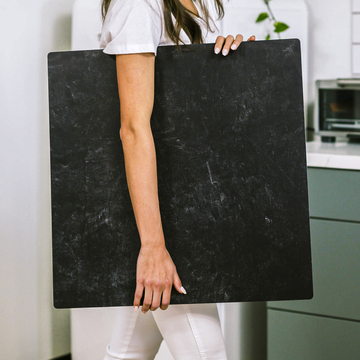Flat lay photography has a habit of stealing the spotlight in the world of small business-think endless scrolls of beautifully arranged goods, perfectly lit and styled. But here’s a truth not often talked about: behind every arresting image, there’s an unsung hero quietly doing heavy lifting. That hero? The flat lay board.
For many creators, a board is just a pretty surface. But with some real-world experience-especially if you’re shooting in your living room, not a pro studio-those boards are about so much more. Get ready to see your photography surface in a whole new light.
The Science Behind the Surface
Think of your flat lay board as a silent collaborator. What it’s made of and how it’s finished plays a direct role in how your photos look. Here’s why:
- Material Microstructure: Matte boards scatter light softly, giving a gentle, professional look. Glossy boards bounce the light, creating contrast but risking glare or harsh reflections. High-end surfaces take this even further with subtle surface textures that minimize unwanted shine and boost realism.
- Color Accuracy: Boards made with color-neutral pigments make sure your whites stay crisp and your product colors pop, no matter if you’re shooting in natural light or under LEDs. Premium boards might even be coated to resist yellowing from extended use with hot lights.
Texture and Depth: Hidden Layers, Bold Stories
Why does some flat lay photography feel so three-dimensional-like you could reach out and touch the texture-while other photos look flat and lifeless? It all comes down to details you might not even notice at first.
- Micro-Relief: Subtle grooves, veins, or grains on the surface create little shadows under side lighting. A faux marble board with slightly raised veins, for example, tricks the eye into reading it as the real thing, elevating even the simplest composition.
- Context and Mood: Stone backgrounds suggest permanence, wood signals warmth, and clean tile looks polished and modern. Swapping boards isn’t just changing color palettes-it’s changing narratives.
Built to Work as Hard as You Do
If you shoot as a maker, shop owner, or artist, your flat lay boards endure a lot: spills, scratches, and daily use. Good surfaces don’t just look nice-they’re built for real work.
- Modularity: Some photography boards connect at the edges to create seamless 90-degree setups-imagine a “corner kitchen counter” look-all right on your dining table.
- Durability: Look for hydrophobic and stain-resistant coatings. You can wipe off coffee rings or lipstick smudges in a snap, and the surface won’t soak up beet juice or bright paint.
- Scratch Resistance: Premium boards are engineered to survive constant reshuffling of props and tools, so you always have a spotless surface ready for your next idea.
Flat Lay Boards: Scene-Setters and Storytellers
Your board isn’t just a backdrop; it’s the set designer for your brand’s visual universe. Changing surfaces can create a new vibe-a rustic, crafty feel one day, a chic boutique the next. Some brands even drop limited-edition textures, letting you stand out with every post.
Need a quick creative refresh? Layer up two boards, tilt one for a corner shot, or play with negative space. Simple tweaks keep your style on point and your audience coming back for more.
Final Thoughts: Upgrade Your Creative Toolkit
A quality flat lay board isn’t just the foundation for great photography-it’s a storytelling tool hiding in plain sight. The next time you set up a product shot, ask yourself: what narrative does this surface deliver?
Invest a little thought into your surfaces, and the difference won’t just show on camera-it’ll be felt by everyone who sees your work. When your brand deserves the spotlight, don’t leave your flat lay board in the shadows.


